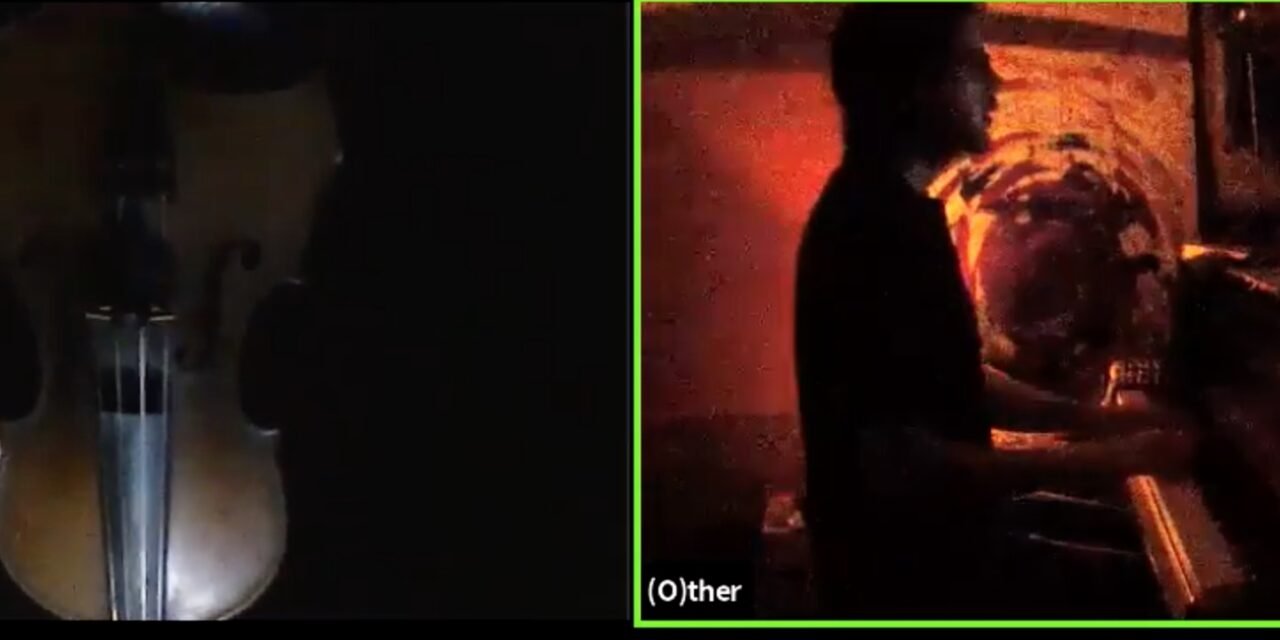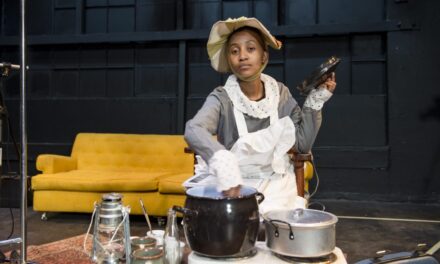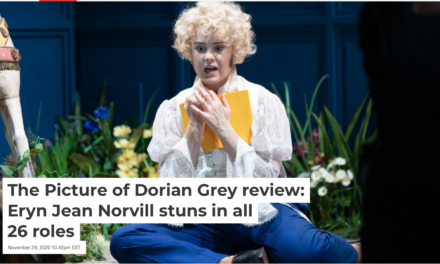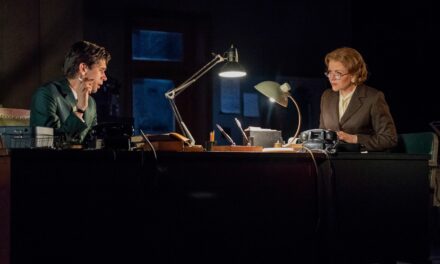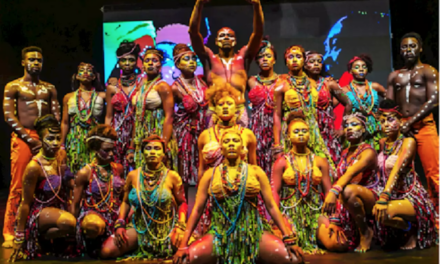The Boston Experimental Theatre (BET) has created a production that manages to reflect our odd, current times while managing to infuse the show with longing, connectivity, and joy.
The show is called M(O)ther and is a collaboration among global artists from Iran, Iraq, Turkey, South Africa, and the United States. The Founder and Artistic Director of BET, Vahdat Yeganeh, has brought together a team of collaborators for the fifth show in his series, Dialogue Among Civilizations. It’s hard to imagine a better performance that is a direct reflection of the present, unique, global situation – the ravages of the pandemic, the isolation of the world’s citizens, the strange beauty of empty streets and silent marketplaces. Using Zoom screens to allow for interactions between performers in different locations, the show, rather than using conventional story-telling, combined music, poetry, masks, lighting, aerial work, and live drawing to create a fascinating study of the human condition.
In a press release for the show, Yeganeh explains,
“The isolation of people based on political hostilities is a continual problem BETC members face. Years of collaborating online, versus together in person, has been a product of inhumane and xenophobic travel bans, now exasperated by the COVID-19 crisis. Recognizing domestic racism and xenophobia are a root cause of unjust government policies and human rights abuses worldwide, M(O)ther is moved by and stands in solidarity with the country-wide Black Lives Matter movement happening in the U.S. today.”
The troupe performed the show live streaming on YouTube Sunday, August 9th. It is still available across the borderless reaches of the internet for free viewing on YouTube:
https://www.youtube.com/watch?v=LfDWFvU4_E8&fbclid=IwAR2f1cU9saQWC9dGcNUSCdkm9oZYfcP-9KSsMPF-NF3mm-LMQ2bCvGQWIxE
The performance begins with a looping slideshow that served as a virtual Playbill (illustrated with ink drawings of masks), that somehow still manage to evoke a time when the audience could enter the theatre and open a booklet or read a flyer with the production notes. After an initial moment of glitchiness, the Zoom session opened with a musician playing bell-plates that communicated the ominous, aching foundation of this work. In tandem with the bell-plates, a second screen displaying white paper pinned to a wall was splashed with ink or paint, while otherworldly voices quoted from poetry by International authors. The voiceover set the stage to enter into the subconscious world of random images, snippets of thoughts, and observations driving human interaction.
In the first section, seven darkly lit Zoom screens contained seven performers whose faces were obscured by elaborate, creepily stunning masks. Round robin they state, “LOOK at me. Look AT me. Look at ME” in Farsi, Arabic, Turkish, and English – over and over as each performer attempted to draw the audience into their individual, separate worlds including a few playing musical instruments: a violin, a small tambourine, and hand drums. Each screen was slowly eliminated until only the violin remained. Musical interludes followed with an interplay between a pianist half-lit in fiery red-gold light, a tar player in shadowy back-lighting, and a violinist in near darkness. And then, a face masked by the violin speaks of “years and years of fears” and asks “what is my home?” while an artist clad in black attempted a self-portrait by standing against the white paper, splashed with paint, drawing around herself.
As this section resolves, another arises, and then another: a man and woman screaming and whispering, “what are you saying?” each not listening, and desperately begging to be heard. Each section of the dream-like production reminds the audience that all participants, including those watching, are alone in their solitary environment. Despite this reminder, the keen work of the collaborators eliminated that hurdle, managing to convey a sense of cohesive team working in partnership. In one of the final sections, in a complete break from the murky settings of the early show, one of the performers escaped his cage of darkness revealing the outdoors, the glorious blue sky, the sun, trees with leaves ruffling in a gentle breeze. This transition acts as a balm to the ache and longing the natural world.
All of the spoken dialogue is constructed from phrases extracted from global, modern poetry and includes works by Sener Bryter, Farough Farrokhz, Langston Hughes, Alan Paton, and Ameen Mokdad. The post-performance discussion with the performers and creative team, (also available in YouTube), is as nearly compelling as the performance. The show ran about an hour with an additional hour-long talk-back session with the cast and crew. During the discussion, Yeganeh shared that the show was created by the entire team. Each performer chose the poetry and brought it to the group to breakdown and incorporate elements into the overall show. Because of this approach to the work, performers are listed as collaborators rather than “actors.” The International collaborators included Jared Wright, Donya Pooli Yeganeh, Engin Ozsahin, Elinor Speirs, Peyman Khazeni, Ameen Mokdad Salim, Leva Jamali, and Astiaj Ziaei. The graphic design is by Leva Jamali; Production Manager was Emily Wright, Script Supervisor was Brenna Nicely, with Dramaturgy and U.S. outreach by Heather Waters.
As the performers and talkback audience interacted with questions, sharing stories, and congratulations, the whole experience was neatly summarized by the heartfelt observation from a cast member that “this performance just proved that art can bring us together.”
This post was written by the author in their personal capacity.The opinions expressed in this article are the author’s own and do not reflect the view of The Theatre Times, their staff or collaborators.
This post was written by Clare Cioffero.
The views expressed here belong to the author and do not necessarily reflect our views and opinions.

